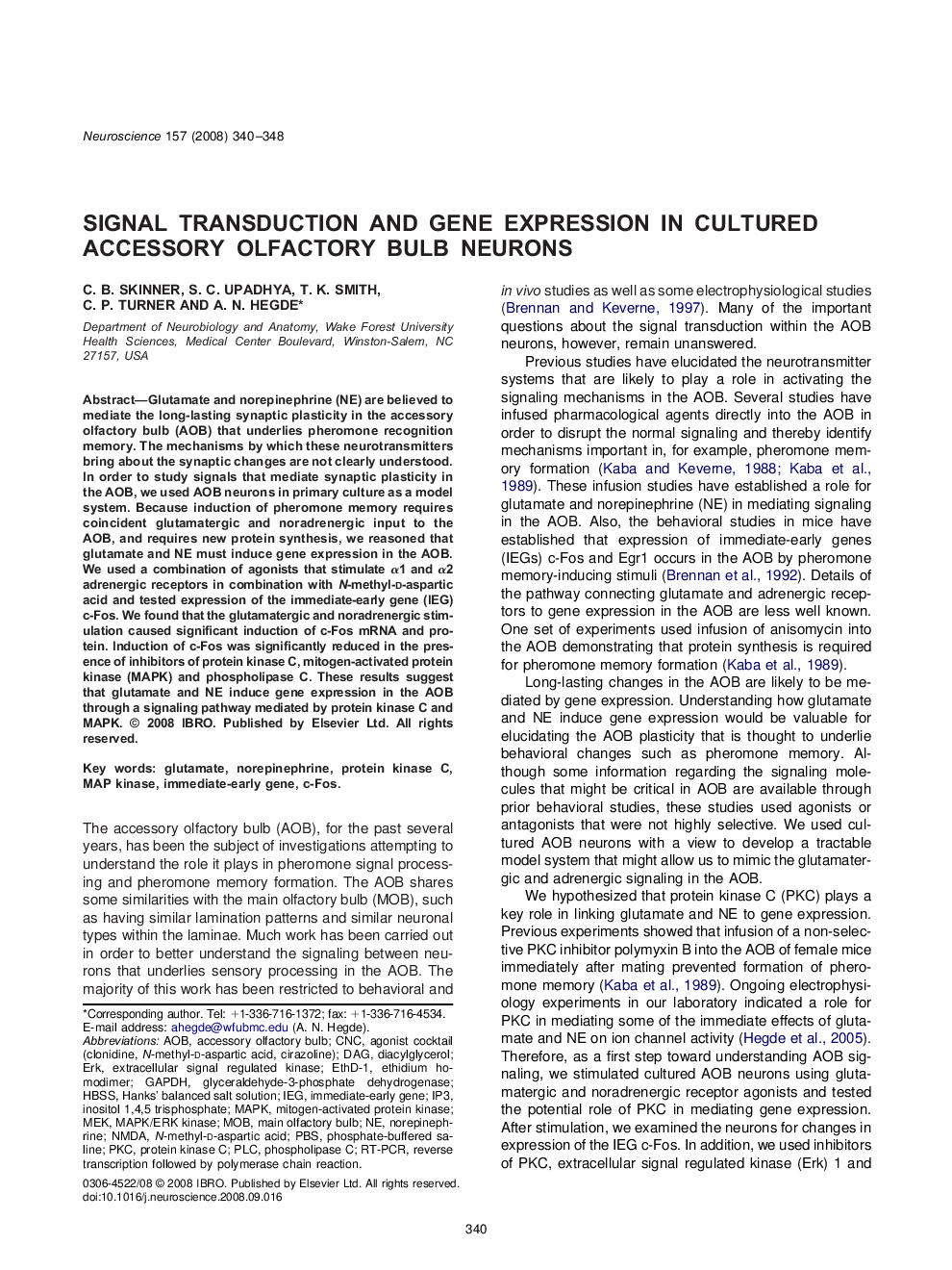| Article ID | Journal | Published Year | Pages | File Type |
|---|---|---|---|---|
| 4340513 | Neuroscience | 2008 | 9 Pages |
Glutamate and norepinephrine (NE) are believed to mediate the long-lasting synaptic plasticity in the accessory olfactory bulb (AOB) that underlies pheromone recognition memory. The mechanisms by which these neurotransmitters bring about the synaptic changes are not clearly understood. In order to study signals that mediate synaptic plasticity in the AOB, we used AOB neurons in primary culture as a model system. Because induction of pheromone memory requires coincident glutamatergic and noradrenergic input to the AOB, and requires new protein synthesis, we reasoned that glutamate and NE must induce gene expression in the AOB. We used a combination of agonists that stimulate α1 and α2 adrenergic receptors in combination with N-methyl-d-aspartic acid and tested expression of the immediate-early gene (IEG) c-Fos. We found that the glutamatergic and noradrenergic stimulation caused significant induction of c-Fos mRNA and protein. Induction of c-Fos was significantly reduced in the presence of inhibitors of protein kinase C, mitogen-activated protein kinase (MAPK) and phospholipase C. These results suggest that glutamate and NE induce gene expression in the AOB through a signaling pathway mediated by protein kinase C and MAPK.
